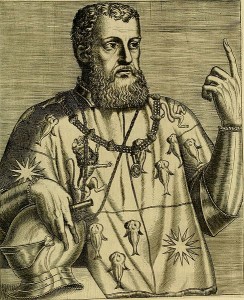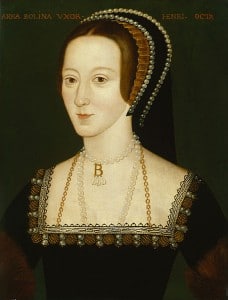 On 11th November 1534, Philippe de Chabot, Seigneur De Brion and Admiral of France, landed on English soil. The purpose of the diplomatic mission he was leading was to renew Anglo-French relations.
On 11th November 1534, Philippe de Chabot, Seigneur De Brion and Admiral of France, landed on English soil. The purpose of the diplomatic mission he was leading was to renew Anglo-French relations.
As Clare Cherry and I point out in our biography of George Boleyn, England had become “more and more isolated from her European cousins”1 due to Henry VIII’s annulment of his marriage to Catherine of Aragon, his break with Rome and his marriage to Anne Boleyn, so this French embassy was hugely significant.
George Boleyn, Lord Rochford, brother of Queen Anne Boleyn and one of Henry VIII’s leading courtiers, was entrusted by the king to escort and entertain the Admiral on his journey from the English coast to London. It was a huge undertaking because it wasn’t just the Admiral George was in charge of, it was also his train of men and 350 horses. Poor George was expected to get the Admiral to London as quickly as possible, but the Admiral’s train caused problems. George Boleyn wrote to his uncle, Thomas Howard, 3rd Duke of Norfolk, who had been appointed to meet George and the Admiral at Blackheath to explain what was going on:
“This my letter shall be to advise your Lordship that the Admiral arrived this day at ten of the clock at the Downs, and there I, with such gentlemen as be commanded by the king’s grace to give their attendance to accompany me, met with him at his coming to land, and from hence we brought him to Dover, where he rested for this first night; and the next day to Canterbury, and there he has desired that he may tarry Friday all day, so that his train may meet with him there, which be now scattered some at Dover, some at Sandwich and some at other places.”2
On 14th November, a clearly harassed George wrote to Henry VIII to explain the delay and the plans for the journey. George was obviously worried about what the King would think and irritated by how things were going. He needed to explain that the delay was due to the Admiral’s wishes and not to any incompetence on his part:
“It may please your highness to be advertised, that the admiral of France hath remained here since Thursday at night, and as yet his whole train both of horses, mules and men, be not come hither nor unshipped. But by tomorrow I doubt not but all his whole train shall be here assembled together: and upon Monday, I will bring him to Sittingbourne, there to remain that night, for that it would be too sore a journey to bring his carriage to Rochester in a day. On Tuesday from thence to Rochester. On Wednesday to Dartford; and on Thursday, by 12 o’clock at noon, to Blackheath; where as my Lord of Norfolk is appointed by your grace to meet him. I would not have him remain so long in this town, but that himself was very desirous so to do, because that he would come with his train whole together, which I thought might not for your graces honour gain saye. And thus, beseeching God to have your highness in his keeping, I make an end.
From Canterbury, this 14th day of November
Your graces most humble and obedient subject
and servant,
GEORGE ROCHEFORD”3
According to Eustace Chapuys, the imperial ambassador, the Admiral finally arrived in London on 17th November.4 George must have been tearing his hair out!
I just wanted to share with you this excerpt from our George Boleyn book:
“It was this enthusiasm, devotion, competence and, above all, loyalty which continued to endear him to the King. Yet almost exactly one year after this letter was written, George was supposed to have had sex for the first time with his sister. And at the same time as the above letter was written, George was supposed to have not only known of Anne’s alleged affairs with the other four accused men, but to have actively encouraged them. Therefore, Henry’s ‘most humble and obedient subject and servant’ was, according to his later prosecution, already committing treason at this point.”5
You can read more about George, his relationship with King Henry VIII and the missions he was entrusted with in George Boleyn: Tudor Poet, Courtier and Diplomat – click here to find out more about the book.
 Now, the Admiral’s visit didn’t quite go the way the Boleyns planned. Unfortunately, although Henry VIII and Anne hoped to make an alliance with France by way of “propositions for the marriage of the King’s second daughter”, i.e. Elizabeth, to the Dauphin, the Admiral actually put forward the idea of a marriage alliance between Mary, Henry VIII’s daughter by Catherine of Aragon, and the Dauphin.6 “The desire by the French to enforce the match was on the understanding that Mary remained legitimate, which would mean the undoing of the Acts of Succession and Supremacy. This came as an unpleasant surprise to Henry and as utter horror to the Boleyns.”7 Anne was not amused, and Chapuys recorded her as being “very angry at it”.8 Henry VIII countered by offering Elizabeth in marriage to the Duke of Angoulême, Francis I’s third son, but that just wasn’t the same as marriage to the Dauphin, Francis I’s heir, and the French rejected this offer anyway.
Now, the Admiral’s visit didn’t quite go the way the Boleyns planned. Unfortunately, although Henry VIII and Anne hoped to make an alliance with France by way of “propositions for the marriage of the King’s second daughter”, i.e. Elizabeth, to the Dauphin, the Admiral actually put forward the idea of a marriage alliance between Mary, Henry VIII’s daughter by Catherine of Aragon, and the Dauphin.6 “The desire by the French to enforce the match was on the understanding that Mary remained legitimate, which would mean the undoing of the Acts of Succession and Supremacy. This came as an unpleasant surprise to Henry and as utter horror to the Boleyns.”7 Anne was not amused, and Chapuys recorded her as being “very angry at it”.8 Henry VIII countered by offering Elizabeth in marriage to the Duke of Angoulême, Francis I’s third son, but that just wasn’t the same as marriage to the Dauphin, Francis I’s heir, and the French rejected this offer anyway.
As Clare and I point out in our book, “the French stance shocked both Anne and her brother, who had previously thought that any support they may have received from abroad would be from France.”9 George had left the French king on excellent terms in July 1534, so what was going on? Well, in October 1534, just a month before the Admiral’s visit, there had been the Affair of the Placards where anti-Catholic posters had been put up around Paris, Blois, Rouen, Tours and Orléans, and even on the door of Francis I’s bedchamber at the Château d’Amboise. This had completely turned the French king against the evangelical movement and, of course, the Boleyns were closely associated with the reformed faith. “From being tolerant of Reform, and a potential ally of the Boleyns, Francis had come to distrust the very ideals that they embodied” and he preferred to arrange a marriage between his son and the Catholic Mary.10 Anne may have been shocked and angry by what happened when the king and Chabot met, but historian Eric Ives writes that “Anne nevertheless did her best to improve matters” towards the end of the Admiral’s visit by entertaining him at a final lavish banquet.11
Also on this day in history…
- 1541 – The King’s Council sent Archbishop Thomas Cranmer a letter giving him instructions to move Queen Catherine Howard from Hampton Court Palace to Syon House, formerly Syon Abbey. It is also thought to be the day when Catherine’s alleged relationship with Thomas Culpeper came to light. Click here to read more about this.
Notes and Sources
Image: Philippe de Chabot from Les vrais pourtraits et vies des hommes illustres grecz, latins et payens (1584) by André Thevet.
- Cherry, Clare and Ridgway, Claire (2014) George Boleyn: Tudor Poet, Courtier and Diplomat, p. 199.
- St Clare Byrne, Muriel (1981) The Lisle Letters, Volume 2, 304.
- Letters and Papers, Foreign and Domestic, Henry VIII, Volume VII, 1427.
- Ibid. 1437.
- Cherry and Ridgway, p. 201-202.
- LP vii. 1482.
- Cherry and Ridgway, p. 202.
- LP vii. 1482.
- Cherry and Ridgway, p. 202.
- Ibid.
- Ives, Eric (2004) The Life and Death of Anne Boleyn
- Cherry and Ridgway, p. 203.